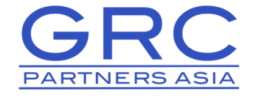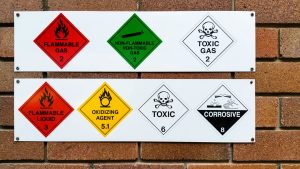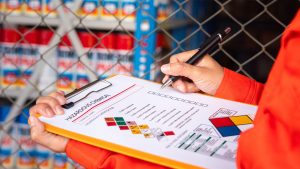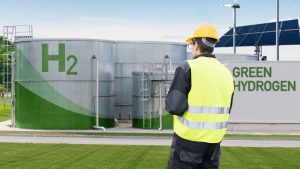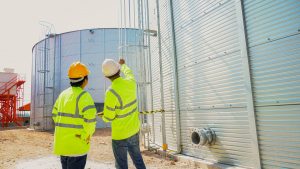Modern workplaces can be hazardous environments. The introduction of new chemicals, tools or practices shows that hazards and risks in the workplace are constantly evolving. The challenge is to stay a step ahead and be prepared. It is crucial to make sure every hazard is properly identified and assessed and mitigated to make sure the right steps are taken to keep everyone healthy and safe.
While some workplaces, such as factories and construction sites, are inherently riskier, every workplace, regardless of size or nature of work, holds some potential dangers. It is the moral and legal responsibility of every organization to protect its workers and the wider environment. Companies must be confident they have the most robust and comprehensive systems in place to anticipate and prevent incidents before they happen. The stakes couldn’t be higher.
What Is Industrial Hygiene?
Industrial hygiene involves identifying, evaluating and controlling workplace environmental factors that can cause illness, health issues or discomfort among workers.
These could be:
- physical (e.g. noise, heat)
- chemical (e.g. harmful liquids or gases)
- biological (e.g. bacteria or viruses)
- ergonomic (e.g. repetitive movement)
Industrial hygienists analyze, identify and measure workplace hazards or stresses that can cause sickness, impaired health or significant discomfort in workers through chemical, physical, ergonomic or biological exposures.
Unfortunately, not all risks can be eliminated. Thus, the goal is to ensure engineering, administrative, work practice controls and PPE are in place to at least control the potential hazard to an acceptable level.
What are the key steps in effective industrial hygiene management?
The adage, “An ounce of prevention is better than a pound of cure,” couldn’t be truer in the field of industrial hygiene. When you are responsible for keeping people and the wider environment healthy and safe, you need to be prepared. Any slip up or oversight could be catastrophic.
This is why the first of the key principles in industrial hygiene is arguably the most important, with all the other steps feeding back to prevent recurrence of incidents the next time round:
Anticipate – the ability to analyze, identify and measure the hazards or stresses that can lead to adverse health effects. When you do this, the risks can be mitigated and potential incidents minimized.
- It relies on a deep-seated knowledge of materials – of chemical, biological, physical and ergonomic risks.
- It also depends on an understanding of the workplace, of various job roles/requirements, of machinery or workplace practices.
- Finally, it depends on analysis – on using existing data to draw the right insights to identify trends and enhance understanding of how the chemical/physical/biological/ergo hazards at the worksite affect worker health – helping to prevent incidents before they occur.
Recognize – identifying hazards in your workplace means you can quickly put the right measures in place to mitigate the hazards and further risks and keep people healthy and safe. The ability to do this depends on a detailed understanding of the environment, of the nature of the work and of the industry as a whole.
Evaluate – any professional working in industrial hygiene needs to have the right data to analyze previous incidents or identify patterns. This, along with a thorough understanding of the nature of the risk equips professionals working in industrial hygiene with the tools to properly assess every risk before they put the right measures in place.
Control – although this is the final stage in the process, this step needs to be taken swiftly after the initial identification of the hazard to make sure no harm results. The right control measures will depend on an effective evaluation of all the factors affecting the risk and need to be based on solid data and understanding.
What is industrial hygiene management software?
Industrial hygiene management software is intended as a one-stop solution to support you in the effective management of your industrial hygiene program. The idea is that all the tools you need are fully integrated into a single system, making it easier to identify, assess and mitigate hazards and therefore prevent incidents from recurring.
Features to look for in workplace hygiene solutions:
- Detailed analytics – drawing on high-quality data to draw valuable insights and identify patterns and trends.
- Report generation facility – allowing the immediate generation of reports for regulation or internal purposes.
- In-built compliance markers – to make sure you align with regulatory requirements and identify areas that might risk falling below required standards.
- Dashboard – to allow quick, easy oversight of all safety elements of your operations and instant access to areas that might need further attention.
- Sampling plans and exposure assessments – to allow samples to be taken quickly and efficiently and to quantify potential risks through assessment.
In short, the right industrial hygiene software gives you greater control by streamlining your organization’s safety data, by providing clear actionable insights and by highlighting trends or gaps in provision or performance – altogether making it easier for you to do your job more efficiently.
How can industrial hygiene software help you?
The right industrial hygiene software should fit seamlessly into your operations. It should be intuitive, accessible on portable devices and capable of giving you the insight you need, fast.
It should help you:
- Gain real-time visibility across your organization with all related data collated in the one place and the ability to quickly compare against regulatory guidelines.
- Streamline analyses by effortlessly creating job hazard assessments from exposure data and offering tailored control recommendations for each role.
- Automated reminders to ensure vital tests, equipment checks, chemical checks and risk assessments are never missed. Set up monitoring plans and track progress against your targets.
- Stay compliant with in-built compliance markers to make sure you align to regulatory requirements and exposure limits.
- Directly link to laboratories for seamless tracking and evaluation of lab analyses.
Workplace hazards have the potential to injure, sicken and even kill workers. As the person responsible for the health and safety of the workforce and the wider environment, any industrial hygienist bears a considerable burden.
The role of industrial hygiene software is to relieve this burden – to lighten the administrative load as well as to deliver the insights and enable the right actions to be taken quickly and efficiently. Easily integrated into existing operations, health and safety software helps keep everyone safer.
Contact us to learn more about Evotix’s Industrial Hygiene Management solution.
This article was originally published by Evotix.
